The torch is passed in Chapala on Wednesday on its way to the opening of the Pan American games in Guadalajara tonight. (Photo:Consuejo Municipal del Deporte). The entire area is gripped by excitement and horrendous traffic which will last for the next two weeks as the games continue. The only event to be held here, as far as I can tell, is Water Skiing.
Note: For those readers from the United States, you can watch coverage of the games from Guadalajara on ESPN2. Canadian viewers can watch the coverage on CBC.
We've been enjoying getting back in the swing of things here as most of our activities have started up again after a summer hiatus. We have been having crazy weather for several days this week as two hurricanes have been organizing off the Pacific coast near Puerto Vallarta. We've been drenched with rain all day for three days. We were used to this unpleasant weather periodically in Maine, but not here! Today seems better; it's good to see the sun.
We've stayed in touch with our Australian friends, Mattie and Fiona. Mattie is a marine engineer who has to leave periodically to work. He just returned from a 12 week job back in Australia. Fiona has found a new house sitting job in Chapala and is teaching English in a local school. She will be here for the rest of the year but Matty will head overseas again this week.
We've been having a problem recently with smaller dogs getting attacked by larger dogs while walking on a leash. Chuy has been attacked two times by larger dogs. Both times I have been able to grab him away form the other dogs, but I have started just walking him around our immediate neighborhood before I go on a longer walk up the hills for my exercise. I also now carry a small can of pepper spray to dissuade any dogs. By the way, the attacking dogs are generally owned by gringos who do not keep them restrained, not Mexicans. Below is a photo I took in front of our house and shows Chuy socializing with three other small dogs.
Speaking of dogs, we celebrated our pets a couple of Sundays ago with a service called "The Blessings of the Animals." It's not that the animals needed blessings of any sort; it was rather to honor the blessings they give us with their presence in our homes. It was a little chaotic; we met outside on the patio for rather obvious reasons.
This Sunday, I will be leading the service with my friend Bob McKeown. I will be reading and leading discussions of poems about aging. I am looking forward to it.
Pixie and I enjoy going to a local restaurant on the lake which features music almost every night. The restaurant is La Tasca, and the night we were there, the owner, Roberto Cerda, a virtuoso guitarist was featured. Here's a photo.
I am preparing my new book of poetry for publication. It will have 57 poems and is entitled Migration after the title poem which is about our experience visiting the Monarch butterfly migration preserve in Michoacan in March 2010. I will include more information about the book when I release it in November. We writers here are fortunate to have a Guadalajara printer, who specializes in small run, high-quality printing jobs, like our books. He lives in Chapala, so we can do our business with him without having to drive into Guadalajara. His name is Carsten Groppe, and he is pictured below in his Chapala home.
We continue to experiment with our vegan diet, and we are making more and more delicious meals. Today we are heading to the market to pick up ingredients for a carrot-butternut squash-ginger soup. Yum. Below is photo of the whole grain bread table at the wonderful organic market we attend every Tuesday. We usually pick up greens, tomatoes, bread, grain-based veggie burgers, honey, chocolate, granola and other treats.
Finally, a recently-published article is receiving some buzz down here because of its comments of the desirability of Ajijic as a retirement destination. I am including it below for your perusal. I think the comments about Ajijic are exaggerated, especially the estimate of how much it costs to live here, but it's an interesting piece. incidentally, three women, including a friend of ours from Maine, Michele Bernier, who live here will be featured on Conan Obrien's show next week. They won some kind of contest and won a stay at a B&B in Burbank, California.
Places to Live the American Dream Abroad
Del Webb understood. When he conceived Sun City in Arizona, he realized that an important part of the appeal behind this retirement option would be the promise of community. Retiring to Sun City meant retiring among like-minded folks and never having to look too far to find company for dinner or someone to share a round of golf with you.
About 10,000 Baby Boomers will retire every day for the next 19 years. Nearly 12 percent of these (about 26 million would-be retirees) are considering retiring overseas.
[See 10 Places to Retire on Social Security Alone.]
If you’re among that group, one thing to recognize is that there’s no such thing as Sun City in most of the rest of the world. The formalized U.S. retirement communities that many of our parents opted for at this point in their lives don’t exist in the countries that today offer the greatest retirement advantages and benefits.
That is not to say, however, that it’s not possible to retire overseas among like-minded folks.
A friend who relocated his family from the United States to the south of France about the same time that we moved from the States to Ireland (some 13 years ago) once remarked, “You know, I think we’re doing this the hard way. Here in France, we’re scrambling to learn French so we can figure out what’s going on, because we’re always confused. We’re trying to make friends and to find a place for ourselves in a French country community where families have known each other for generations. We don’t understand French cultural nuances yet, so we’re committing one faux pas after another. And we don’t have any other Americans around to commiserate with, no one to show us the ropes. We’ve really jumped into the deep end of this living overseas thing.
[See Ireland: A Low-Cost Place to Retire.]
“And you have, too, in Ireland. You aren’t struggling with a new language [in fact, my husband and I would have argued that we were!], but you’re on your own in a foreign community. You’re living and working and sending your children to school among the Irish. You’ve plopped yourself down and are trying to fit in among the local community.
“It’d be a very different experience, I think,” my friend continued, “to move as an expat into an ‘expat community,’ a place like Lake Chapala, Mexico, for example, where you’d be surrounded by other people just like you, other people who’ve already done what you’re doing and who could offer a word of advice when you needed one.”
Which is better? Assimilating into the local culture or becoming part of the American Dream abroad? It’s entirely up to you. There’s no right or wrong way to retire overseas. Understand, though, as you begin your retire-overseas thinking that choosing to “go local” or not is one of the most important and fundamental decisions you must make. For many, understandably, the promise of familiar company is comforting.
If you’re interested in the idea of retiring overseas but also like the idea of retiring to very familiar surroundings, where, specifically, should you consider? Here are two top choices:
[A Beautiful Beach Town for $1,000 a Month.]
Top Expat Community Pick #1: Ajijic, Mexico. Ajijic and the area around Lake Chapala, Mexico, hosts the most organized, developed expat community in the world. The Lake Chapala Society reports about 4,000 American and Canadian residents in Chapala proper. The Mexican government, meantime, estimates that nearly 20,000 expats reside full-time in the state of Jalisco, the region where Lake Chapala sits.
In other words, the path has been cut. Moving here, you could slide into a way of life not dramatically different from the life you left behind in the States. You wouldn’t have to worry about learning the local language if you didn’t want to. You wouldn’t have to work to make a place for yourself among the local community, because this isn’t a “local” community. This is an entire community of nonlocals. You could wander into the restaurant down the street anytime and find English-speaking companionship, someone to complain to about the bureaucracy at the Department of Immigration or the challenges of studying to take a driving test in Spanish. Retiring to Ajijic, you could make a very comfortable life for yourself in a place that’s exotic, beautiful, safe, and very affordable.
[See How to Retire for Half the Cost Overseas.]
Friends who have taken this path live comfortably on less than $50 per day (U.S. dollars), including housing, food, transportation, entertainment, and in-country travel. They eat well, play tennis, socialize, and travel comfortably. As they put it themselves, they want for nothing.
Don’t misunderstand. Ajijic isn’t a retirement village. This isn’t Sun City South, at least not formally. This is a legitimate Mexican town that, over the past three decades, has attracted such a volume of foreign retirees that it’s become less Mexican and more foreign resident–friendly.
Top Expat Community Pick #2: Boquete, Panama. Boquete, Panama, is this country’s Gringolandia, as some foreign retirees in residence refer to it affectionately. According to Boquete’s information and tourism office, about 3,000 foreigners live in this colorful mountain town. Migration continues, and the number of foreign residents in Boquete is expected to increase to 10,000 by 2016.
What’s the attraction? Beautiful setting, good climate, straightforward pensionado rules (for all Panama), yes, but, mostly, the draw in Boquete, as in Ajijic, is the established gringo community. This is a place to come to enjoy many of the benefits of being retired overseas without leaving behind too many of the comforts and conveniences of American suburban living.
[See 5 Critical Issues When Retiring Overseas.]
In one private, gated, residential community development I know in this region, for example, amenities include a golf course, stables, even a small central town created specifically for foreign residents; and construction, for both the shared amenities and the individual homes, is to U.S. standards, with U.S.-style finishes, fixtures, and fittings. In Boquete town itself, shops and services catering to the ever-growing foreign retiree population continue to open. In the U.S.-style restaurants serving American-style menus (featuring scrambled eggs for breakfast and cheeseburgers for lunch), you’ll hear all-English conversation at the tables around you and all-American music on the speakers. People you pass on the street will greet you with a wave and a “hi” or a “hello,” assuming that that’s how you’d like to be addressed and that you’ll reply in kind.
Kathleen Peddicord is the founder of the Live and Invest Overseas publishing group. With more than 25 years experience covering this beat, Kathleen reports daily on current opportunities for living, retiring, and investing overseas in her free e-letter. Her book, How To Retire Overseas—Everything You Need To Know To Live Well Abroad For Less, was recently released by Penguin Books.
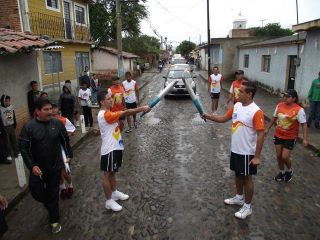







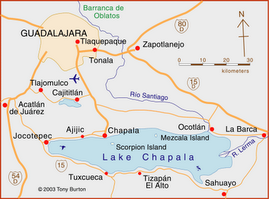






















































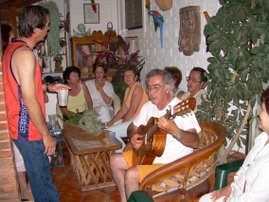






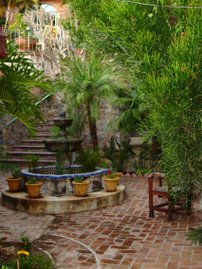
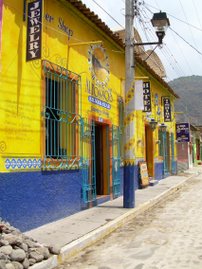
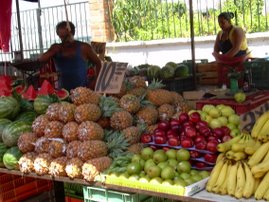


2 comments:
off white hoodie
vapormax
michael kors outlet
christian louboutin outlet
louboutin shoes uk
jordan retro
air max 270
nike air max
yeezy boost 350
golden goose
supreme clothing
100% real jordans for cheap
nike react
golden goose outlet
nike x off white
longchamp
golden goose
golden goose sneakers
yeezys
kobe shoes
Post a Comment